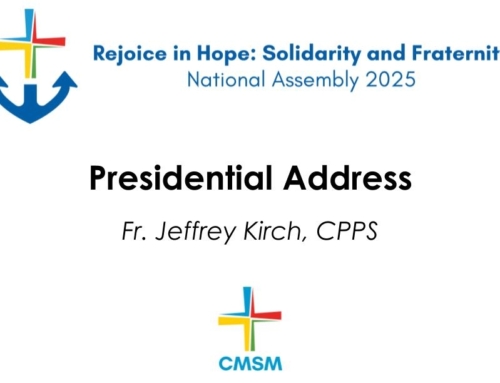In this essay, two brothers teaching in a religious-sponsored school examine how the rapid rise of generative AI has reshaped classroom practice, challenged students’ learning habits, and prompted new guidance from the Church, especially in light of Antiqua et Nova. For further reading on this issue, please see Fr. Aaron Wessman, GHM’s essay on AI and religious life.
Click here to download a copy of the essay.
The release of ChatGPT is 2022, and the subsequent release of other AI applications like Gemini, Microsoft Copilot, and NotebookLM has transformed the field of education. Teachers have had to scramble to find ways to appropriately incorporate these powerful new tools into their classes, while at the same time keeping their students honest and preventing them from becoming overly reliant on AI to the detriment of their own learning and development. At the same time, the Church has been working to study, understand, and offer guidance on the potential benefits of dangers of this new technology. The note Antiqua and Nova released by the Dicastery for the Doctrine of the Faith and the Dicastery for Culture and Education in January 2025 is part of this ongoing effort.
The authors of this essay are both religious brothers belonging to the Marist Brothers of the Schools, working in one of the Marist secondary schools. Br. Sam is a full time teacher, teaching eleventh-grade US History and twelfth-grade Religious Studies. Br. Ryan is a campus minister and teaches one class, a religion elective named Called to Ministry (CTM), which trains students to be peer ministers and run retreats, liturgies, and prayer services for the school. In this essay, we hope to offer some useful reflections in light of our own experiences and in light of the Church’s guidance as expressed in Antiqua et Nova.
Current Realities
For this year’s seniors, the class of 2026, their high school experience has been filtered through ChatGPT responses since its launch during the first semester of their freshman year. The program enjoyed immediate and near-universal adoption among high school students looking to take advantage of its promises to handle whatever prompts or instructions you could feed into it. The possibilities were endless, but the real question was this: “Can it do my homework?”
The answer to that question was, and continues to be, yes. In the last three years, ChatGPT has done so much homework. In classrooms across the globe, a cat-and-mouse game developed. Each iteration follows a similar pattern. Teachers begin to recognize the “tell” of a paper completed using artificial intelligence. Students – and AI chatbots – learn how to disguise that “tell,” from unreliable AI detectors, to prompts and programs that learn to make a paper sound more human with addendums like, “Write it again using the vocabulary and style of a sophomore in south Texas.” Many teachers are starting to revert to technology-free classrooms with pen-and-paper assignments, some forgoing homework assignments entirely.
Other teachers see this policy as too extreme, and fear a technology-free classroom will not prepare students for the professional life they will be entering. Br. Sam has his history students write research papers on their laptops, but this is done in class as he circulates, observing the students’ screens. AI cheating has become so ubiquitous that this is essentially the one way to allow students to use computers while ensuring the work is their own.
This creates problems for students who genuinely do not want to cheat. Teachers now regularly use AI-detection services, like Turnitin.com, to check for use of AI on papers and essays. These services are notoriously imperfect, often giving false positives and false negatives, and must be used alongside teachers’ own judgment and knowledge of their students’ writing. Some students simply have a polished and professional writing style, and they now live in fear of being falsely flagged for AI cheating. They have learned to avoid certain AI-preferred words and constructions: comprehensive, intricate, pivotal, delve, semicolons, and em-dashes. Some students have developed the habit of making their writing more idiosyncratic, or even inserting outright grammatical errors, to avoid the appearance of using AI.
The common use of AI is creating a number of deficiencies in students’ abilities. Br. Ryan is only in his third year of ministry, but over the course of that time, he has observed a noticeable decline in students’ ability to brainstorm and generate new ideas. When his CTM students are tasked with planning a prayer service or retreat, their first impulse is often to consult ChatGPT for ideas. When challenged about this, they often defend themselves by saying they they are only looking for inspiration. However, if their first impulse is always to turn to an AI for a list of suggestions, their ability to brainstorm their own ideas will atrophy. Instead of gaining inspiration, students will lose their ability to come up with their own creative ideas.
In his classes, Br. Sam has seen a real decline in students’ writing skills, especially in their ability to create well-structured sentences and paragraphs. Students find it too tempting to simply write out a list of inchoate thoughts and ideas and then ask the AI to craft it into grammatical text.
Students’ research skills are also suffering. In the aughts, teachers were concerned about students becoming overly reliant on Google, but at least with the old-style search engines students were only given a list of relevant links. It was up to them to open the suggested websites, read them, and make a judgment about their reliability. Now, whether you want it or not, every time you type a query into Google you receive an AI-generated overview at the top of the results page, summarizing the topic. It is all too tempting for students (and adults for that matter) to accept these overviews at face value, without examining the sources that were used to generate it.
Beyond its educational impact, the ecological footprint of AI is further cause for concern. As Antiqua et Nova observes, “current AI models and the hardware required to support them consume vast amounts of energy and water, significantly contributing to CO2 emissions and straining resources” (96). Human beings themselves significant environmental footprints, but the extensive use of AI for cognitive tasks that we could easily do ourselves is putting further starin on the planet.
Possible Ways Forward
To understand what the role of AI in education should be, we need to remember that the goals of education have always been both practical and formational. We work to give young people the skills and knowledge they will need to earn a living and manage their lives as adults. We also work to further their human development so they can live to fullest as sons and daughters of God. The first priority demands that AI be incorporated into teaching, because using AI will almost certainly be a needed skill in our students’ future professional lives. The second priority, however, demands that we ensure our students can think, reflect, and express themselves without recourse to AI as a crutch.
Educators have to instill in students an awareness that their point-of-view has an inherent value by virtue of coming from a unique individual with their own experiences, perspectives, and strengths. As Antiqua et Nova states, “Human intelligence… develops organically throughout the person’s physical and psychological growth, shaped by a myriad of lived experiences in the flesh” (31). AI large language models, in contrast, work by generating statistically likely responses based on enormous samples of text taken from the internet. They have no point-of-view because they are not viewers. AI responses are typically adequate and professionally polished, but also feel like exactly what they are: the anodyne statistical average of what other people have already said.
In response to his CTM students using AI, Br. Ryan has had to have a number of frank conversations: “In what way do you think ChatGPT is better than you? Do you think it is a better Catholic than you? Do you think it has a more prayerful relationship with God than you do? Does turning to a chatbot make sense? If your goal is try to create a meaningful experience for other human beings, why would you be asking an AI?”
On a purely practical level, teachers need to plan their classes to minimize the potential for AI cheating. Work that can be done on paper largely should be. Work that must be done on a computer should be done in class, under the teacher’s supervision. Teachers should have their students writing early and often, primarily because it is good for them, but secondarily to give the teachers a decent sample of students’ authentic writing so that they can better determine if future writing assignments are done with AI.
Students should also be taught when and how to use AI in an appropriate and honest way. AI is increasingly being used in the work world to automate routine clerical tasks where human judgment and creativity is unnecessary. Students should be prepared for this. Br. Sam supervises his students to ensure they are not using AI to generate their writing, but he encourages them to use AI for things like formatting citations and checking that their papers are in correct APA or MLA format. This is an important lesson for the students to learn: No one wants to attend a retreat or prayer service planned by a machine, but on the other hand no one cares whether APA citations were done by hand or with AI. Learning this can motivate the students to begin seriously thinking about what they have to offer to the world: “What can I bring to the table that a machine can’t?” The answer to this question will be increasingly important to everyone in the working world.
Part of learning appropriate AI use is learning that they are imperfect. ChatGPT will frequently include false or mistaken information in its responses, known as “hallucinations” in the field of artificial intelligence. Because the responses seem so confident and professional, people will often accept them at face value without question. Students need to be regularly reminded that AI is not infallible, and that we are all responsible for being critical consumers of information.
Beyond hallucinations, students also need to be aware the bad actors may try to use AI to manipulate them. As Antiqua et Nova observes, “While AI has a latent potential to generate false information, an even more troubling problem lies in the deliberate misuse of AI for manipulation. This can occur when individuals or organizations intentionally generate and spread false content with the aim to deceive or cause harm, such as “deepfake” images, videos, and audio” (87). Awareness of this potential needs to be part of AI education.
Conclusion
For the last six hundred years, society has been repeatedly reshaped by advances in communications and computing technology: the printing press, lithography, photography, radio, television, personal computers, smart phones, social media, and now generative AI. Each of these advances has had profound effects on society, and especially on education. Teachers will never find the one, perfect way to educate their students that will remain valid for all time. We have to continually adjust our pedagogy, accommodating a changing world and the changing needs of our students. As we move forward, we look for guidance to our faith, our God-given judgment, and the wisdom of previous eras.






